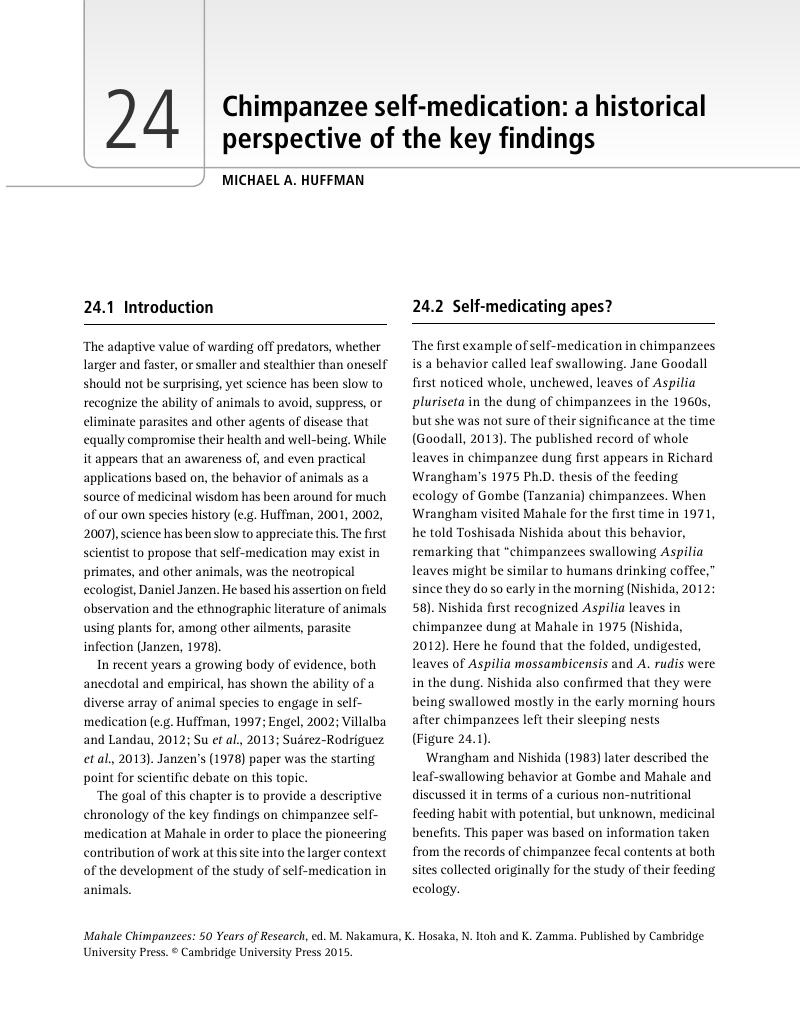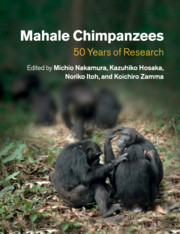Book contents
- Mahale Chimpanzees50 Years of Research
- Mahale Chimpanzees
- Copyright page
- Contents
- Contributors
- Foreword
- Preface
- Acknowledgments
- 1 Introduction
- Part I History and overview
- Part II Social organization
- Part III Ecology
- Part IV Feeding
- Part V Life history and health
- 22 Development and growth: with special reference to mother–infant relationships
- 23 Gerontology
- 24 Chimpanzee self-medication: a historical perspective of the key findings
- 25 Diseases and deaths: variety and impact on social life
- 26 Conspecific killings
- Part VI Social relations
- Part VII Social behavior
- Part VIII Behavioral diversity
- Part IX From field to lab
- Part X People and chimpanzees
- Appendices
- Index of chimpanzees’ names
- Subject index
- References
24 - Chimpanzee self-medication: a historical perspective of the key findings
from Part V - Life history and health
Published online by Cambridge University Press: 05 September 2015
- Mahale Chimpanzees50 Years of Research
- Mahale Chimpanzees
- Copyright page
- Contents
- Contributors
- Foreword
- Preface
- Acknowledgments
- 1 Introduction
- Part I History and overview
- Part II Social organization
- Part III Ecology
- Part IV Feeding
- Part V Life history and health
- 22 Development and growth: with special reference to mother–infant relationships
- 23 Gerontology
- 24 Chimpanzee self-medication: a historical perspective of the key findings
- 25 Diseases and deaths: variety and impact on social life
- 26 Conspecific killings
- Part VI Social relations
- Part VII Social behavior
- Part VIII Behavioral diversity
- Part IX From field to lab
- Part X People and chimpanzees
- Appendices
- Index of chimpanzees’ names
- Subject index
- References
Summary

- Type
- Chapter
- Information
- Mahale Chimpanzees50 Years of Research, pp. 340 - 353Publisher: Cambridge University PressPrint publication year: 2015



